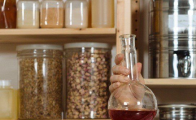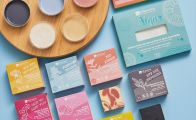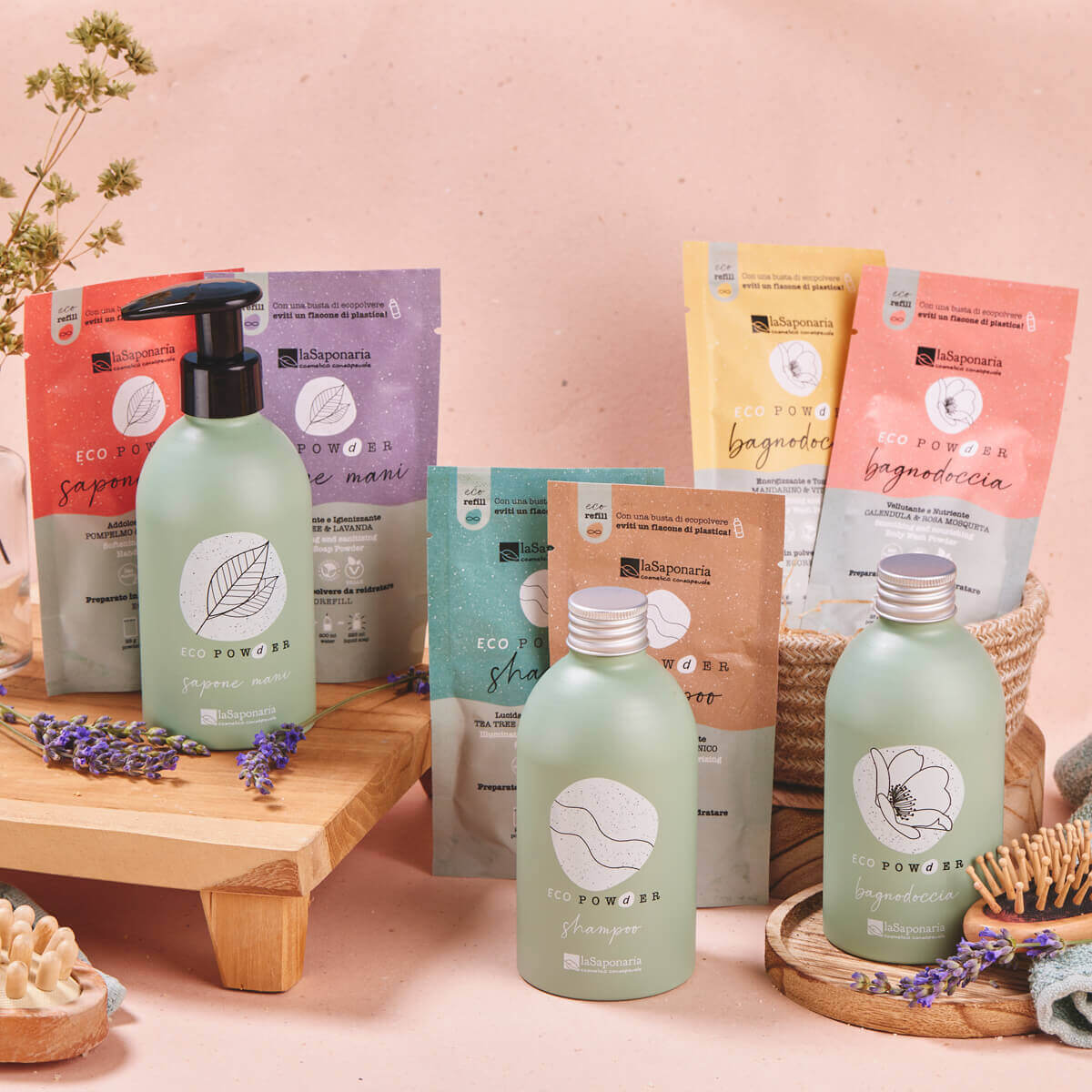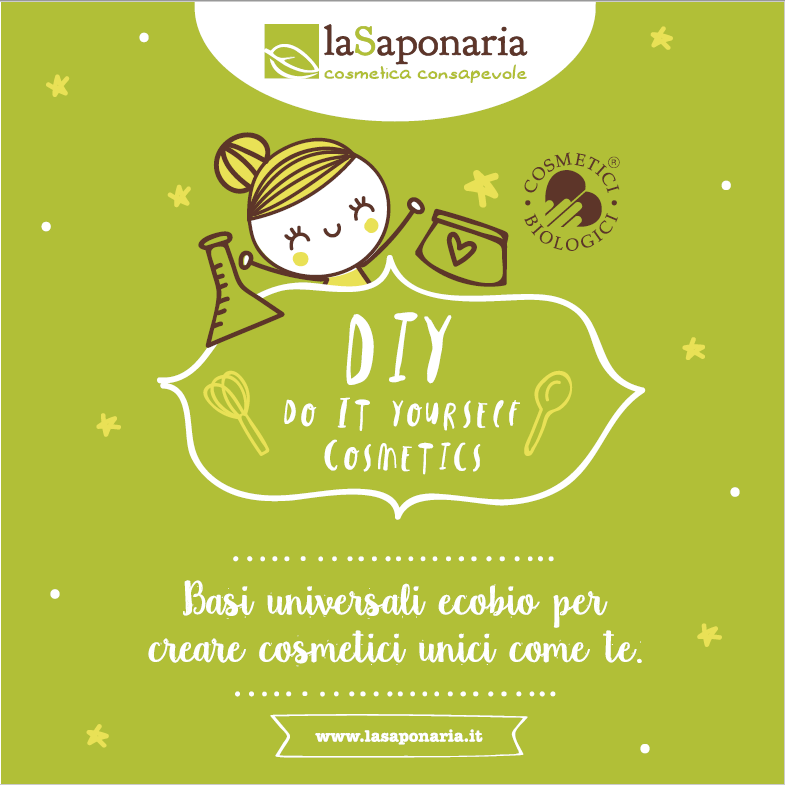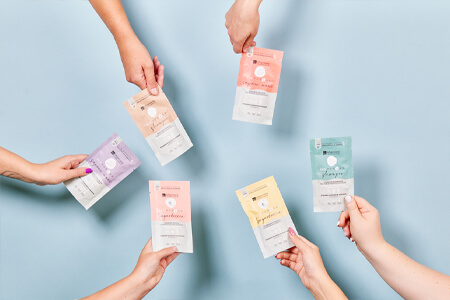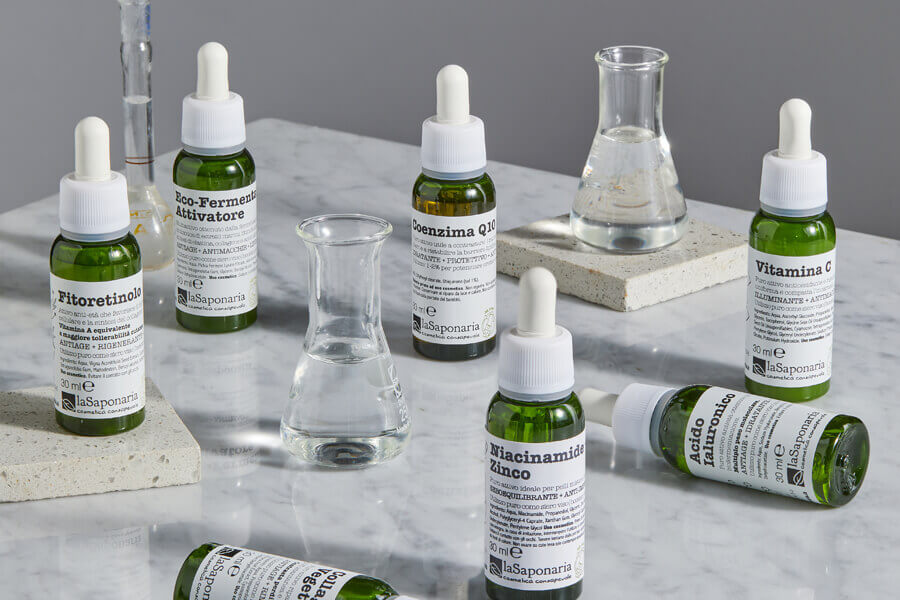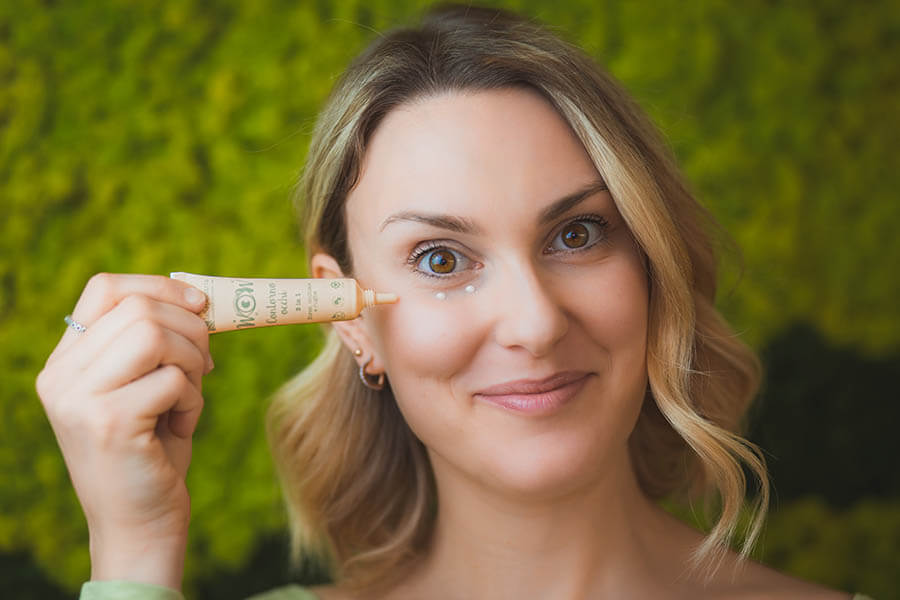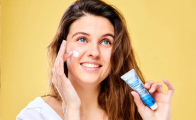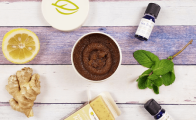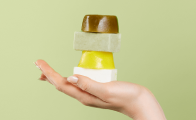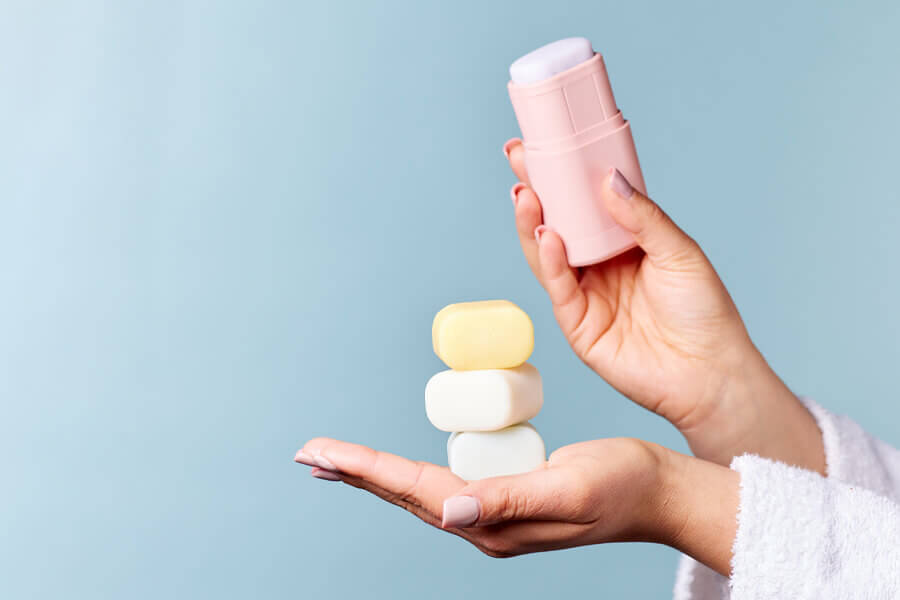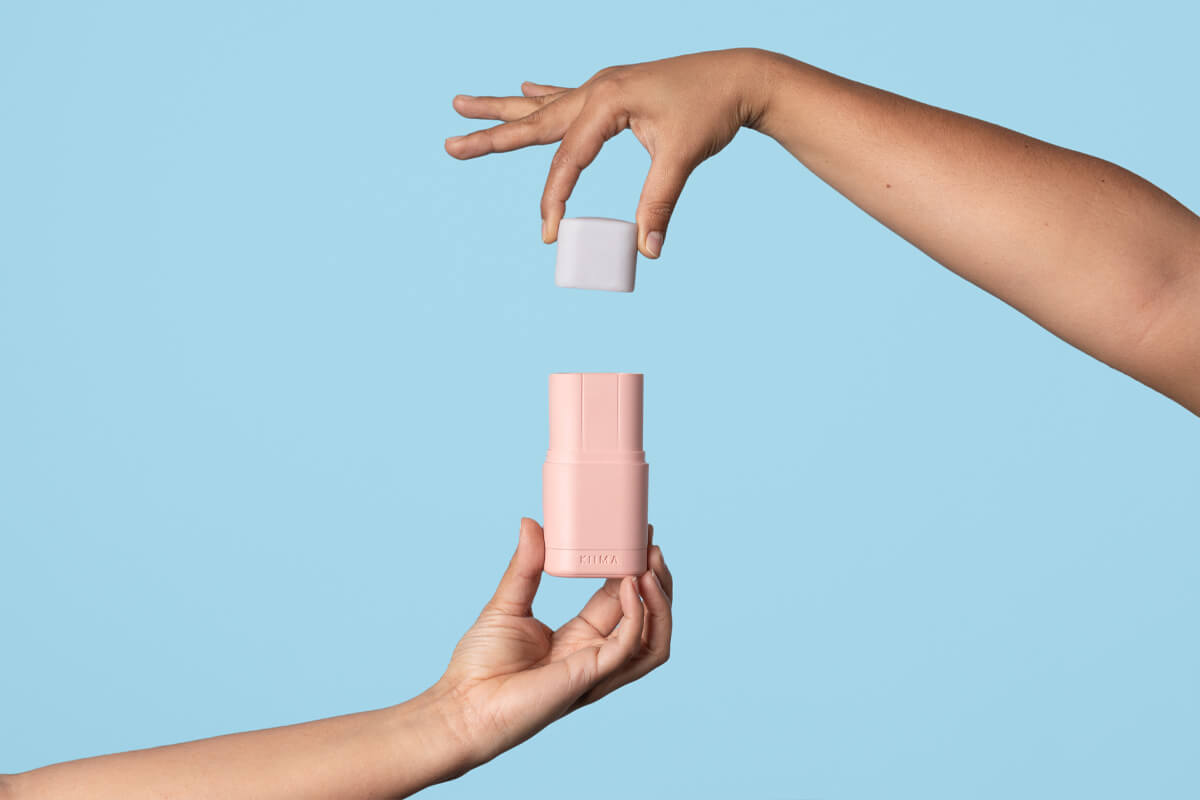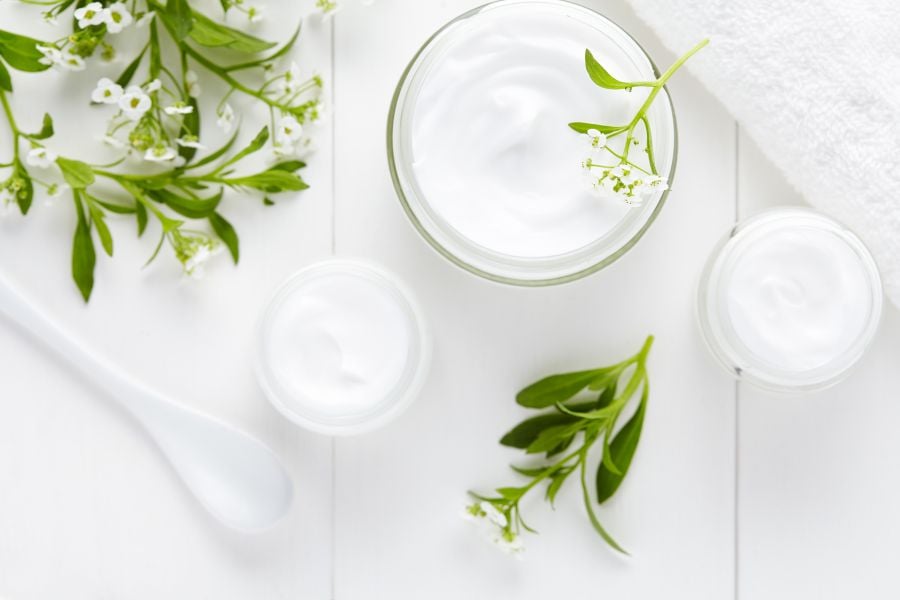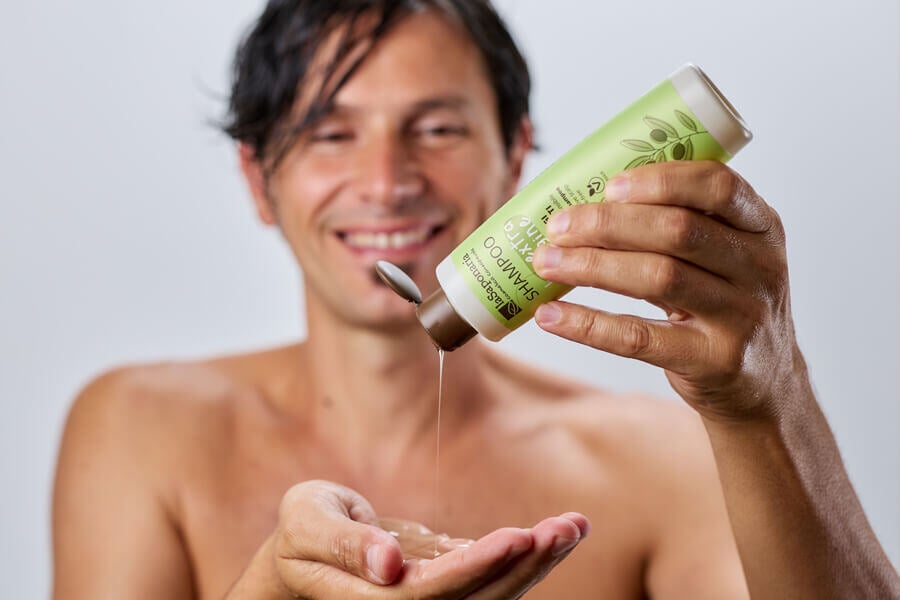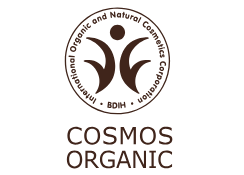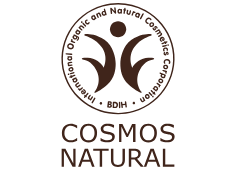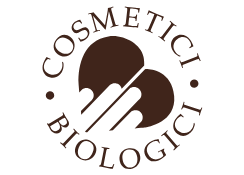The insights of La Saponaria
Deodorants: the ingredients to avoid. What shouldn't be in a natural deodorant
Thorough personal hygiene and freshness are essential for anyone. This is why deodorants play a crucial role in our daily routine. However, not all are the same. Let's find out together which ingredients to avoid in deodorants without sacrificing effectiveness!
Deodorants are cosmetics that mask the smell of sweat and perform an antibacterial action, the main cause of the bad smell of our sweat. Deodorants have now become indispensable for everyone's everyday hygiene: for aesthetic and social reasons none of us like to smell and we all want deodorants that guarantee long-lasting effectiveness throughout the day.
Deodorants, like all cosmetics that we find on the market in the European market, are to be considered safe because they are approved by regulatory bodies. However some ingredients used to make the products are constantly monitored and are subject to various studies. Given the sensitivity of the area where we apply deodorants, the armpits, characterized by proximity to lymph nodes and the presence of sensitive skin and often subject to depilation, there are aspects that should be investigated in order to consciously choose the best product for us.
But how to recognize the ingredients in a cosmetic? All the ingredients with which the cosmetics are formulated are written by law on the labels. These lists are called INCI and they are often very difficult names to decipher if we are not expert chemists or cosmetologists. The curiosity? They are written in a specific language, it looks like Latin but it's not! Learning to distinguish some names can be important to immediately understand if a product may be of interest to us or not. There are also various apps that help read the Inci. To learn more about this topic you can read our INCI guide: how to read them and all the useful tools to decipher them
So are there really any ingredients that are best avoided in deodorants? Let's find out together and see what shouldn't be in a natural deodorant. Here's what you'll find in this article:
Deodorants: what are the ingredients to avoid?
Deodorants: avoid aluminum salts?
Ingredients to avoid in deodorants: Potassium alum?
Are parabens ingredients to avoid in deodorants?
Silicones: criticality of this ingredient in deodorants
Alcohol: why do we find it in deodorants?
Artificial and natural perfumes: what to choose in deodorants
Triclosan: critical ingredient for deodorants?
Conclusion
Deodorants: what are the ingredients to avoid?
As we have seen, deodorants are cosmetics that work to remove the bad smell of sweat. This action can be achieved through different ingredients. It's often widely believed that natural or organic deodorants don't work well because they can't guarantee hold throughout the day. In the past this statement could also have been true even if the question is always very personal: some organic and natural deodorants work very well on some people, while on others they don't. Certainly over time the formulas have improved and today we find formulas that satisfy an ever wider spectrum of people. In particular, bicarbonate-based deodorants are really excellent for a long lasting but not only these.
Why are so many people looking for natural alternatives to classic deodorants? Because in recent years awareness has grown that some ingredients contained in deodorants can be critical for various aspects of our health. The studies are still ongoing. Let's see together what these ingredients are.
Deodorants: avoid aluminum salts?
Many deodorants on the market contain active ingredients that block perspiration and thus the development of bad odours.
Among the most commonly present ingredients with anti-perspirant functions, we find aluminum salts, used precisely to reduce the leakage of perspiration. When applied, aluminum salts dissolve in our sweat forming a temporary barrier. They are therefore mainly used because they act on two things:
- They perform an anti-perspirant function, blocking the sweat glands and preventing perspiration from escaping from our body
- They have a bacteriostatic action, thus reducing the activity of skin bacteria which are the cause of bad smells
It may seem obvious to say that sweating helps our body to regulate our temperature and expel toxins, but it is not: by using aluminum salts, we are clogging the pores by interfering with the normal functioning of physiological processes.
But then aluminum salts: are they a danger to our health?
The topic is still much debated and subject to several studies. Research has focused on trying to understand how these aluminum salts penetrate through the skin and in what quantities.
The Italian Association for Cancer Research (AIRC) has expressed itself on its website to try to clarify the risks to health and breast cancer following prolonged use of this ingredient. Here is a small excerpt:
“Aluminum compounds are among the active ingredients of deodorants. [...] Some researchers have speculated that aluminum may be absorbed through the skin and modify estrogen receptors in breast tissue. Since many cancers respond to estrogen concentrations, aluminum could, in theory, increase the risk of getting sick. At the moment, however, there is no reliable evidence that aluminum can reach the mammary gland through the skin (one of the most serious studies has demonstrated the passage of an almost negligible amount, equal to 0.012%). The amount of metal that reaches the udder through food is much higher than that which crosses the skin. As a result, experts believe that there is, at the current state of research, no concrete link between aluminum in deodorants and breast cancer.”
Pending further studies that confirm or deny safety, it would be better to avoid prolonged use of these products on our body as a precaution. So if you want to avoid aluminum, you can look for deodorants that use natural alternatives to reduce bad odors and that let your skin breathe naturally, such as our Biodeo.
Ingredients to avoid in deodorants: Potassium alum?
Potassium alum, known since ancient times, was used in many activities such as in the textile industry to fix colors or in medicine to clean wounds. Nowadays it is commonly known as rock alum, it is often sold in pharmacies and supermarkets as a semi-transparent white stone and is used as a natural alternative to traditional deodorants.
In addition to having antibacterial and deodorant properties, it also has soothing and astringent functions as well as being a hemostatic.
Because of these many properties, in addition to being used as a deodorant, it is also often used on small wounds such as cuts following a shave, waxing or on mosquito bites to reduce inflammation and relieve itching.
Potassium alum, although not classified as a dangerous substance and generally well tolerated by our body, is in any case an anti-perspirant: its action prevents the skin from perspiring adequately. In fact, rock alum contains aluminum salts which bring with them all the critical issues we have seen above. The studies are still ongoing and the subject is rather controversial, but as a precaution we can avoid its use by opting for alternatives that do not present any critical issues.
Are parabens ingredients to avoid in deodorants?
Parabens are synthetic preservatives which, given their low toxicity, are widely used in the medical, cosmetic and food fields.
Given their bactericidal and fungicidal function, their purpose is therefore to inhibit the growth of microorganisms within the products so as not to alter them.
Over the years, controversies have developed about the potential risks associated with breast cancer and the potential for disrupting the endocrine system. Thus forcing the various regulatory bodies to carry out in-depth studies and to issue regulations on the matter.
What does U.S. Food & Drug say?
In the United States there is no law governing its use. Therefore, no legal limits have been defined regarding the concentrations in cosmetic products. The U.S. Food & Drug administration in one of its articles explains why they can be used freely in America: this aspect would be linked to the fact that the typical concentrations are less than 3% in products, thus making the risk very low or almost zero for people.
What about Europe instead?
The European Union does not feel the same way and has issued a regulation to impose limits, while Denmark has banned some, such as propyl- and butylparaben. Even if their use is therefore approved, to be considered safe, a product that contains parabens must comply with limits on the maximum concentrations that can be contained within the product.
This is why more and more people are opting for cosmetics in general and deodorants in particular that do not contain parabens, also because for some time now organic cosmetics has demonstrated that parabens are not essential ingredients for the formulation of cosmetics, but there are various natural, safe and much better tolerated by all skins, even the most sensitive.
Silicones: criticality of this ingredient in deodorants
Since the 90s, silicones have found wide use in cosmetics: we find them above all in creams and hair products. This is because they are inert substances that do not interact with the other ingredients present in the formula, but are used as technical substances, useful for making the textures of the products easier and more pleasant to spread. Being hydrophobic substances, they create a water-repellent barrier on the skin and hair: if on the one hand this barrier is able to protect them from external agents such as pollution and smog, on the other hand it prevents the evaporation of water from inside, altering the natural perspiration of skin and hair.
This category includes over 500 derivatives: they can be easily recognized on the label because their names end with -one, -xane, -silanoil. What is certain is that they are non-biodegradable and therefore polluting substances that have a negative impact on the environment.
Alcohol: why do we find it in deodorants?
There is no single type of alcohol. When we use this word in cosmetics we are referring to a group of different substances.
The most common of these is ethanol, also known as ethyl alcohol. It appears as a transparent liquid, with an intense odor and easily flammable. We find it in many products and the answer as to why it is widely used is simple: it is cheap to produce and it has multiple properties. Among the main ones we find:
- bactericidal effect
- acts as a preservative and protects against possible contamination
- reduces inflammation
- has an anti-odour effect
- as a vehicle for fragrances
- suitable as a solvent for materials which are not soluble in water, such as for
example volatile essential oils
Is alcohol bad for our skin?
The first thing to consider is the dosage. Studies state that a concentration of less than 5% is not a problem as it evaporates quickly without leaving a trace. However, a higher dosage and repeated use can ruin the protective oil layer of our skin making the skin dry and cracked.
When not to use alcohol-based products?
If in most consumers it does not cause any discomfort even at higher dosages, it is important to remember that it is strongly discouraged in subjects with allergies, sensitivity to the compound, in people with already irritated, dry or damaged skin.
It should therefore not be used immediately after depilation and shaving in order to avoid irritation and during the summer, before exposing yourself to the sun, in order not to alter the skin layer.
Among the various types of alcohol, however, there are some defined as good alcohols. As previously mentioned, the chemical term alcohol in fact includes a series of compounds that have rather different properties.
Among the alcohols used in cosmetics, the fatty alcohols certainly stand out: they are mainly used as emollients, moisturizers, co-emulsifiers and texture factors, they help to improve the stability of the products and their smoothness and spreadability. They are considered safe substances and with completely different properties from those of ethyl alcohol.
Artificial and natural perfumes: what to choose in deodorants
How important is it for a deodorant to smell good? Perfumes in cosmetics, as well as deodorants can be artificial or natural. Artificial perfumes are also called synthetic perfumes, or molecular perfumes, they are often made with petrochemical-derived alcohol and fixative substances that make the perfumes persistent on the skin. They can be stronger, bolder and more persistent than natural perfumes.
Natural perfumes, on the other hand, are born from essential oils extracted from plants processed with completely natural raw materials. The creations are born without the use of synthetic elements and thanks to a real art of perfume, the knowledge of which is lost in the mists of time. In fact, man has always used extracts of plants and wild flowers to produce simple essences.
Many deodorants contain artificial fragrances which, due to their nature, may be irritating or make the deodorant unsuitable for use immediately after shaving. Natural perfumes, on the other hand, are less aggressive and much better tolerated by the skin, especially sensitive areas such as the armpits.
Triclosan: critical ingredient for deodorants?
Triclosan is an antibacterial ingredient often used in cosmetics that we can also find in some deodorants. In general in cosmetics, its use is permitted at a concentration of up to 0.3%. This ingredient works by blocking an enzyme necessary for the growth of bacteria and therefore these small quantities are sufficient to exert a marked antibacterial action.
There is an important aspect that raises concern about the use of this substance: it is hypothesized that, given its massive diffusion and continuous dispersion in the environment, it could cause antibiotic resistance. This means that it could cause an increase in the resistance of bacteria to the most common antibiotics with important consequences for people's health, in the hospital and pharmaceutical fields.
However, this effect is still highly debated and subject to investigation as this correlation has not yet been demonstrated. Even in the absence of confirmations for these risks of toxicity, the problem has been submitted to the Scientific Committee for Cosmetic products of the European Commission. In 2002 it was concluded that, based on the available clinical evidence, the use of triclosan in the conditions currently in force is safe and therefore, for the moment, no new legal limits or provisions imposing restrictions of any kind are needed.
In any case, as a precaution, it is not an ingredient that we have ever used here at La Saponaria, always preferring natural and safer alternatives.
Conclusion
Often, especially in the past, the deodorant was the most difficult thing to replace for those who came from traditional cosmetics and wanted to embrace the organic one: "Ok, organic and conscious choices, but natural deodorants don't work!" How many times have we heard this?
Yet there are some ingredients, such as aluminum salts, often present in traditional cosmetic deodorant formulas, which are subject to various studies because they are possible endocrine disruptors. Other ingredients such as alcohol, anti-perspirants, silicones and petrolatum should be avoided in an area as sensitive and rich in receptors as the armpits and in this article we have seen why. But then? Are we destined to stink forever?
No! First came the Biodeos from La Saponaria, who have earned a place of honor in the search for organic and natural deodorants that work. And now there's this new evolution: the solid Biodeo formula is even more effective than the one we already know, plus they're zero waste and plastic free, they don't need disposable bottles and if we prefer to use them even more comfortably, there's it is the applicator to seal what will be a great love story that has all the conditions to last forever!
Want to know more about them and their magical ingredients? Let's talk about it on our blog! Not sure which solid Biodeo is best suited for you? Take our quiz!👇

Written by Simona
She is La Saponaria’s digital writer: always juggling a newsletter to send and a blog article to publish, she lovingly takes care of our social media channels and our e-commerce.



